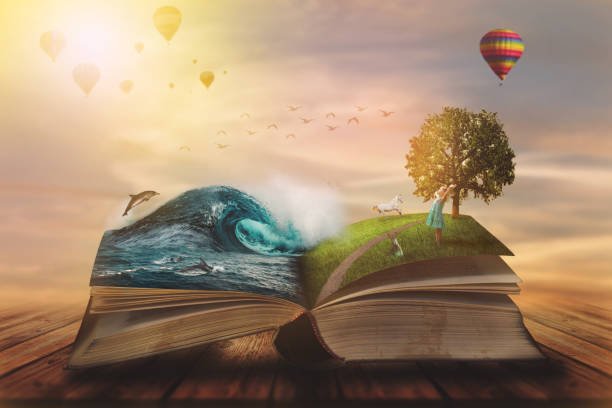How is Poetry Different to Other Writings Genres of Literature
Title: Understanding Poetry: How It Stands Apart From Other Writing Genres
Poetry, one of the most ancient forms of literary expression, has a unique character that distinguishes it from other writing genres. From novels to news articles, from academic papers to personal essays, each writing genre serves its purpose and has its stylistic norms. However, poetry’s uniqueness lies in its structure, rhythm, brevity, and emotional depth.
How is Poetry Different to Other Writings Genres of Literature?
Poetry is different from other writing genres of literature because it typically adheres to specific structures, employs meter and rhyme to establish rhythm, and often uses concise, potent language to evoke emotions and depict vivid imagery. Unlike most prose, poetry allows for greater structural freedom and creative experimentation, even bending grammatical rules to create unique forms and expressions. Additionally, poetry’s rhythmic nature, achieved through meter and rhyme, gives it a musical quality that distinguishes it from standard prose. Another defining characteristic of poetry is its brevity and depth; poets condense complex emotions, ideas, and imagery into relatively few lines, creating intense and concentrated expressions of human experience. Furthermore, poetry often uses symbolic language and double entendre, allowing for multiple layers of interpretation within a single line or stanza. These unique characteristics make poetry a distinct and profound genre in the world of literature.
Structural Freedom and Creativity
One of the defining characteristics of poetry is its structural freedom and creativity. While prose tends to follow grammatical rules and straightforward sentence structures, poetry often breaks free from these constraints. Lines in a poem can start and end seemingly arbitrarily, leaving much room for creativity and interpretation. For example, E. E. Cummings was known for his innovative use of syntax and punctuation, as seen in his poem “anyone lived in a pretty how town.”
The Rhythm of Language
Unlike most prose, poetry often uses meter and rhyme to establish rhythm. This rhythmic nature makes poetry similar to music. Consider Robert Frost’s “The Road Not Taken,” where the poet uses iambic tetrameter and a specific rhyme scheme to create a melodic effect. While rhythmic prose exists, such as in speeches or religious texts, it is far more prevalent and pronounced in poetry.
Brevity and Condensation
Another distinguishing feature of poetry is its brevity. Poets condense complex emotions, images, and thoughts into just a few lines or verses. Emily Dickinson’s short yet profound poems are great examples of this characteristic. In contrast, prose genres like novels or essays often elaborate on ideas extensively, offering detailed descriptions and discussions.
Emotional Depth and Imagery
Perhaps the most poignant aspect of poetry is its ability to evoke deep emotions and vivid imagery. Through figurative language devices such as metaphors, similes, and personification, poetry paints pictures in the reader’s mind and resonates with their emotions. Take, for instance, Maya Angelou’s “Still I Rise” – the poem uses powerful imagery and emotive language to express resilience in the face of adversity. While other genres can also stir emotions, poetry does so with an intensity and concentration that sets it apart.
Symbolism and Double Entendre
Symbolism and double entendre are also more commonly used in poetry than in other forms of writing. Poets often use symbols to convey deep meanings or multiple interpretations. A single line in a poem can hold several layers of meaning, making poetry a genre rich in interpretative possibilities. “The Tyger” by William Blake, for instance, uses the symbol of a tiger to explore themes of innocence and experience, creation and destruction.
Reliance on Sound Devices
While alliteration, assonance, consonance, and onomatopoeia can be found in all genres of literature, these sound devices are especially crucial in poetry. They add a musical quality, creating a harmony of sounds that can enhance the poem’s mood or meaning. Consider Edgar Allan Poe’s “The Bells,” in which the repetition of the “b” sound in “bells, bells, bells, bells, bells, bells, bells” mimics the relentless ringing of the bells.
Subjectivity and Personal Expression
While novels and plays often focus on narratives and characters, and journalistic writing centers around factual reporting, poetry often serves as a more direct outlet for personal expression and introspection. This is not to say that poems cannot tell stories or be objective, but they often provide intimate glimpses into the poet’s emotions and thoughts. For example, Sylvia Plath’s poetry frequently reflects her inner struggles, providing a poignant exploration of her mental state.
Freedom from Reality
Lastly, unlike journalistic or academic writing that is grounded in facts and reality, poetry often defies the constraints of the real world. It is free to explore imaginary landscapes, bend time and space, and personify inanimate objects. John Keats’ “Ode to a Nightingale,” for instance, depicts a speaker in dialogue with a bird, engaging in a form of escapism from the harsh realities of human life.
Reader Engagement
Another unique aspect of poetry is the level of active engagement it demands from the reader. Due to the symbolic and condensed nature of poetry, readers are often required to delve deeper and ponder the underlying meanings, encouraging a more participative reading experience. T.S. Eliot’s “The Waste Land,” with its complex web of references and symbols, is a prime example of a poem that challenges and engages its readers.
Below is a table comparing the key features of poetry with three other forms of writing: prose (fiction), drama, and non-fiction.

This table just gives you a basic comparison between different types of writing. Each of these categories can be further broken down into sub-genres that have their own specific characteristics.
Poetry stands out as a unique genre in literature due to its structural freedom, rhythmic qualities, brevity, emotional depth, and the use of symbolism. Its ability to encapsulate profound emotions and thoughts in condensed, creative forms sets it apart from other writing genres, offering readers an immersive, evocative experience.

